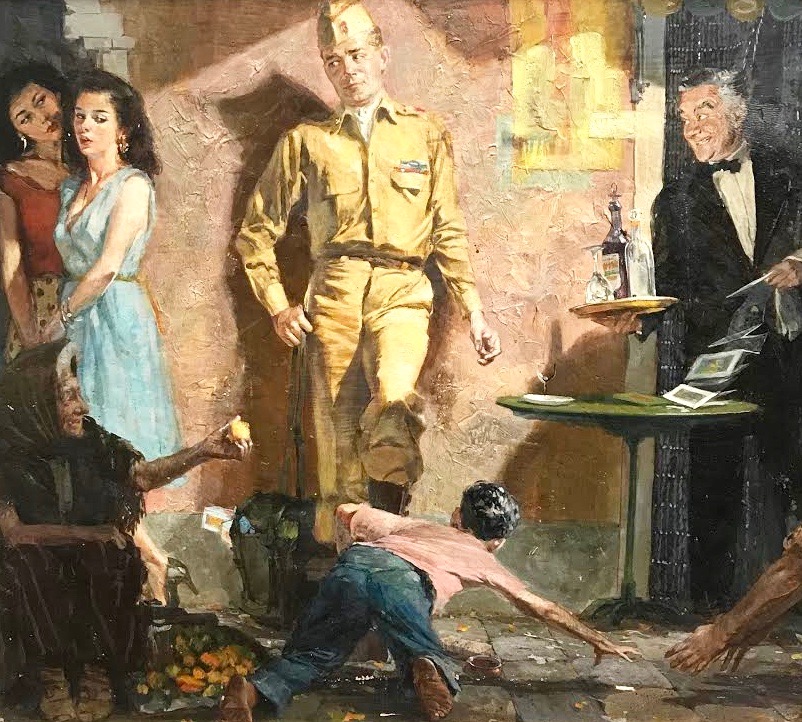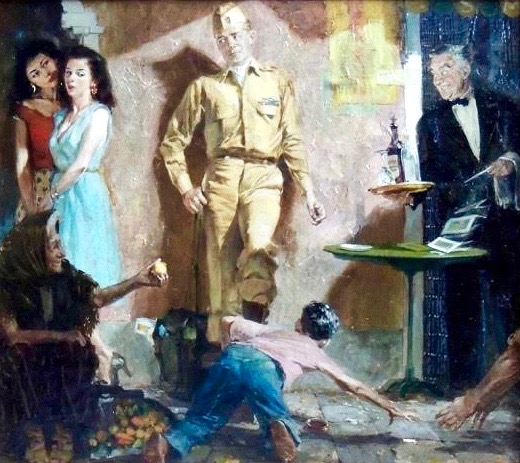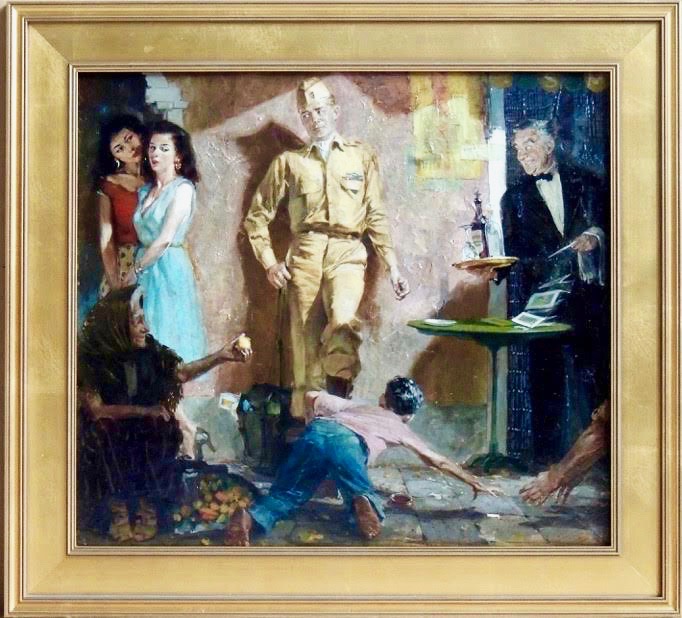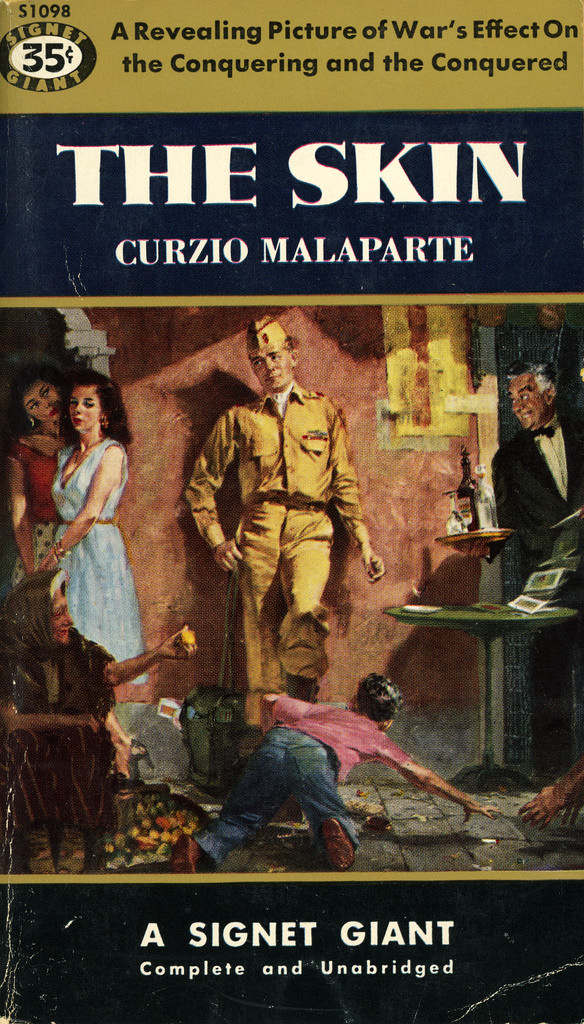"Cover Illustration for 'The Skin'" Lot no. 3501
By Stanley Meltzoff (1917-2006)
1954 (Estimated)
20" x 22.25"
Oil on Masonite
REQUEST PRICE
PURCHASE REQUEST
Original cover for the paperback book The Skin by Curzio Malaparte, published by Signet Books, 1954. (Signet S1098)
Explore related art collections: Paperback Covers / Pulp / Military/Soldiers / $20,000 - $50,000 / 1950s
See all original artwork by Stanley Meltzoff
ABOUT THE ARTIST
Born in New York, his father Nathan was a cantor at a Manhattan synagogue and instilled in his son a keen appreciation for the arts. Stanley was educated at CCNY, graduating with a Phi Beta Kappa key and falling into an instructorship at the famed Pratt Institute of Art before the advent of World War II. During the war, he was a correspondent for Stars and Stripes, honing his illustration skills to formidable proportions alongside such luminaries as Bill Mauldin and Ed Vebel. In addition to his work on the army newspaper, he created he visuals for Puptent Poets, a small paperback of soldiers' verse that struck a nerve with every serviceman who opened its pages.
Returning to NY after the war, he spent five years alternating between teaching and art, finally gaining the artistic courage to go out on his own. The 1950s were spent creating dozens of pulp fiction paperback covers for the likes of Agatha Christie and Robert Heinlein (among many others) and rendering iconic imagery for a number of high-profile Madison Avenue advertisers. Along the way, he painted covers and interior spreads for Life, National Geographic, Saturday Evening Post, The Atlantic, and dozens more. His record 65 covers for Scientific American was indicative of the good company that repeatedly demanded his work. In 1975, Meltzoff's art was chosen to grace the cover of AT&T's nationally distributed bicentennial phone book, a scene that instantly became one of the most famous commercial images of all time. Today his art hangs in the National Gallery (Smithsonian), National Geographic Society, Getty Museum, and many other world-class institutions.
Flush with mid-career success, however, Meltzoff was caught flat-footed by the advent of low-cost color photography and reproduction in the early 1960s. All of a sudden, classically versed illustrators found their finely honed skills less in demand. Bowing to the times, he switched gears and began painting saltwater game fish in their undersea environments. He was the first to do so, initially securing a commission from Sports Illustrated and later ornamenting the entire spectrum of outdoor media. He painted virtually all the major salt water game species, dismissing fresh water varieties as being too easy to see and thus less interesting to paint. For decades, Meltzoff's art appeared regularly in virtually every major outdoor publication, including Field and Stream, Gray's Sporting Journal, Outdoor Life, Sporting Classics, Sports Afield, Wildlife Art, and others. Widely celebrated throughout his career, today it is not too much to say that virtually every fish painter of any stature still regards Stanley Meltzoff as not only the father of the genre but still its unchallenged master. Meltzoff died in 2006 at age 89. A book on his life and work was published in late 2009, and his art is currently undergoing a well-deserved rediscovery by art institutions and collectors.
New York Times Obituary Retrieved October 23, 2008







